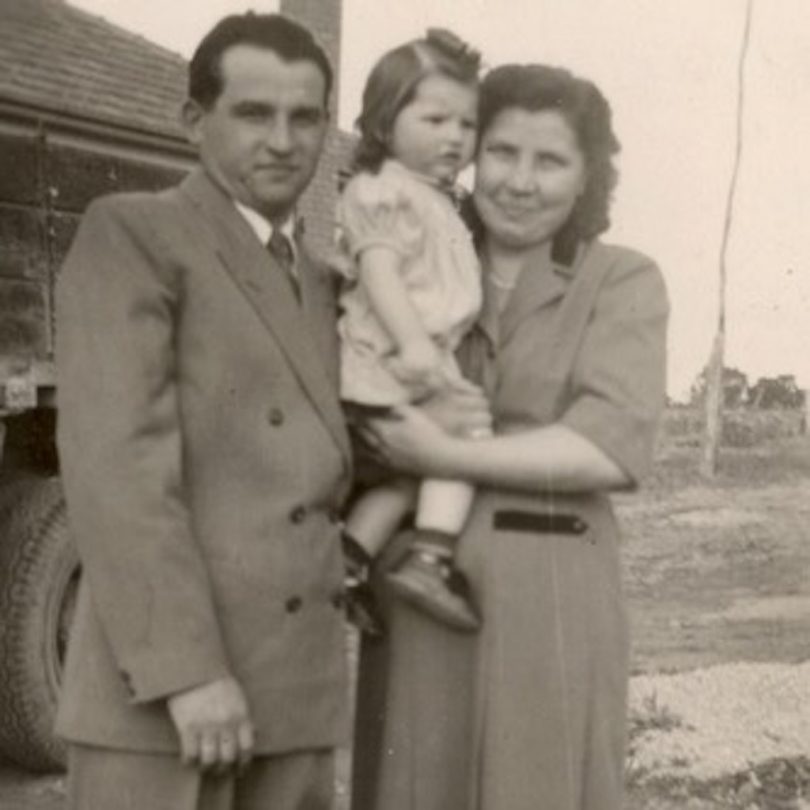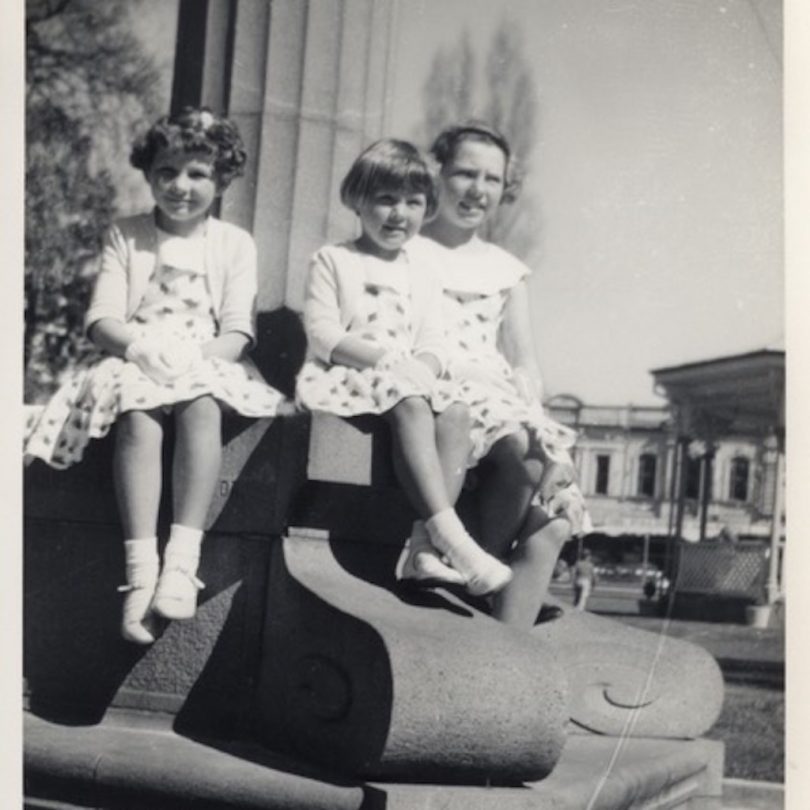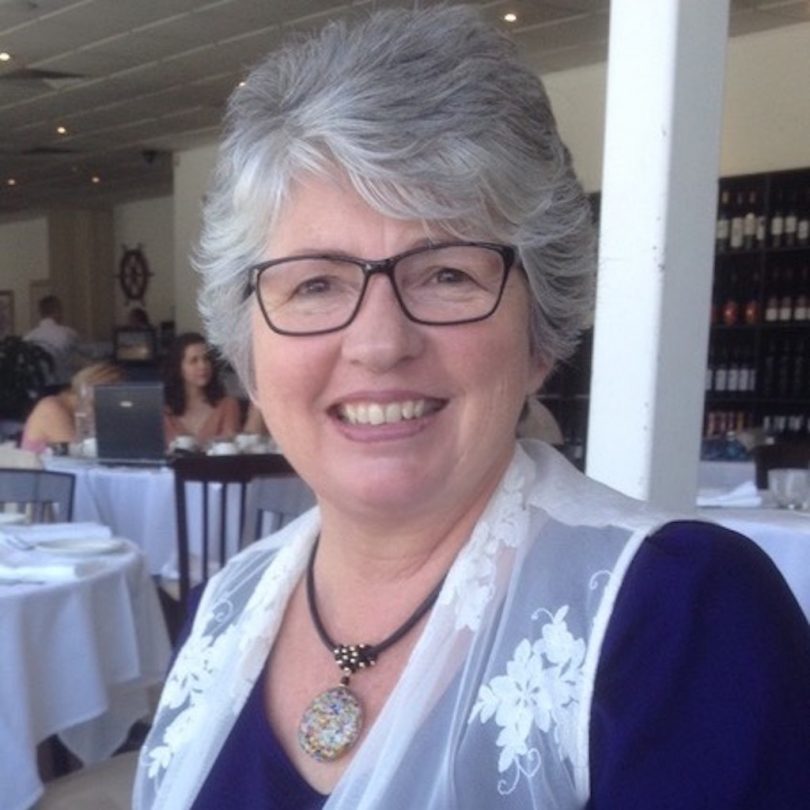
Max, Valentina and Nadia Koschenow in Marulan in 1953. Photo: Supplied.
Curiosity drives Goulburn-educated teacher and researcher Nadia Johnson. Her knowledge of displaced migrants who made new lives in Australia in the 1940s and 1950s is widely sought. Yet Nadia’s father and mother’s early lives – the trigger for her research – remains mysterious.
Her parents survived brutal dictators Joseph Stalin and Adolf Hitler, were employed as slave labourers and joined Australia’s depleted workforce in 1953 when Nadia was only 18 months old.
After sailing to Port Melbourne, the young couple travelled by train to Marulan in NSW. They had two more girls and were fiercely determined to give them opportunities they never had.
Nadia’s father’s family lived in Leningrad (now St Petersburg) in Russia.
Modest Koschenow, who was later known as Max in Australia, grew to detest communism. Nadia’s mother, Valentina Borshev, grew up in the Ukraine. During World War II, before they met one another, they were forced to work in Germany, and they found their way separately as displaced persons to Belgium after the war where they met, married and had Nadia.
In Marulan, they lived in a garage. Nadia’s earliest memory is darting outside to see the little girl (herself) that she had glimpsed in the dressing table mirror against the wall inside.
Her parents could not speak English.
“I remember my mother saying they would buy the newspaper and there was a comic called Nancy with quite a simple language,” says Nadia. “She actually taught herself to read English from that comic.”
Max became a self-taught electrician in the limestone quarry at Marulan South. Nadia learned English at Marulan South Public School, even though schools were not resourced to help migrant children.
In high school, former Marulan South pupils caught the workmen’s bus from the quarry early in the morning, then waited for the Marulan school bus to take them to Goulburn.
In 1966, when Nadia was in third form (year 9), the family moved to Godfrey Street in Goulburn, near the high school and hospital. Her parents had scraped together enough money to buy a block of land.
“They scrimped and saved very carefully,” says Nadia. “I know we did without a lot. We had the basics, and we were never hungry and were always beautifully dressed.
“My mother was scrupulous with saving, and eventually they were able to buy this block of land and build a home.

Veronika, Luba and Nadia Koschenow at Belmore Park in Goulburn around 1962. Note their immaculate white gloves, shoes and socks. Photo: Supplied.
“We grew up on our own produce, and we never bought vegetables. Everything was in the garden. We had our own chooks, geese and ducks, and dad would shoot rabbits. That’s how we survived.
“My mother made all our clothes, and we were often dressed alike. All the money went to better things for ‘their girls’.”
The family’s neighbours were lovely.
“There was John and Shirley Carr living next door to us, and Joy and Bobby Rudd on the other side,” says Nadia.
“They were always welcoming to us and we did a lot together. After my father died, somebody scribbled ‘wog’ in big letters on mum’s driveway. The neighbours were so incensed they washed it off before mum could see it.”
Valentina Koschenow was reserved.
“My mother was very determined, very intelligent, spoke several languages, and could write letters overseas for other people,” says Nadia.
“She always made sure her girls looked fine and did well. My father was proud of us, too, but mum was the driving force in getting things done.”
Following high school, Nadia completed a general primary school teaching course at Goulburn Teachers College, and taught at Wee Waa out west, where her husband, Frank Johnson, a senior engineer, worked at Narrabri.
Later they moved to Sydney.
Inquisitive about her background, Nadia began asking questions.

Goulburn-educated teacher and researcher Nadia Johnson. Photo: Supplied.
“My parents were reluctant to talk about their background, probably not wanting to upset us too much,” she says.
“They hated the memories of things that happened. But I had this thirst for finding out what happened, and why people came to Australia.
“It’s been a life-long journey trying to work out all this on my own, doing my own research.”
Nadia says the Snowy Mountains Hydroelectric Scheme exemplifies the role of Europeans in Australia in the 1950s and 1960s.
“In the Goulburn area they worked in the limestone quarries, on the railways, Kenmore Hospital, many others as well, and the women in domestic type roles, cleaning and so on,” she says.
A large population of European displaced persons lived in the Marulan and Goulburn area from the late 1940s.
Many left after their two-year work contracts were fulfilled. The Koschenows were among those who stayed, enriching Goulburn for future generations.












